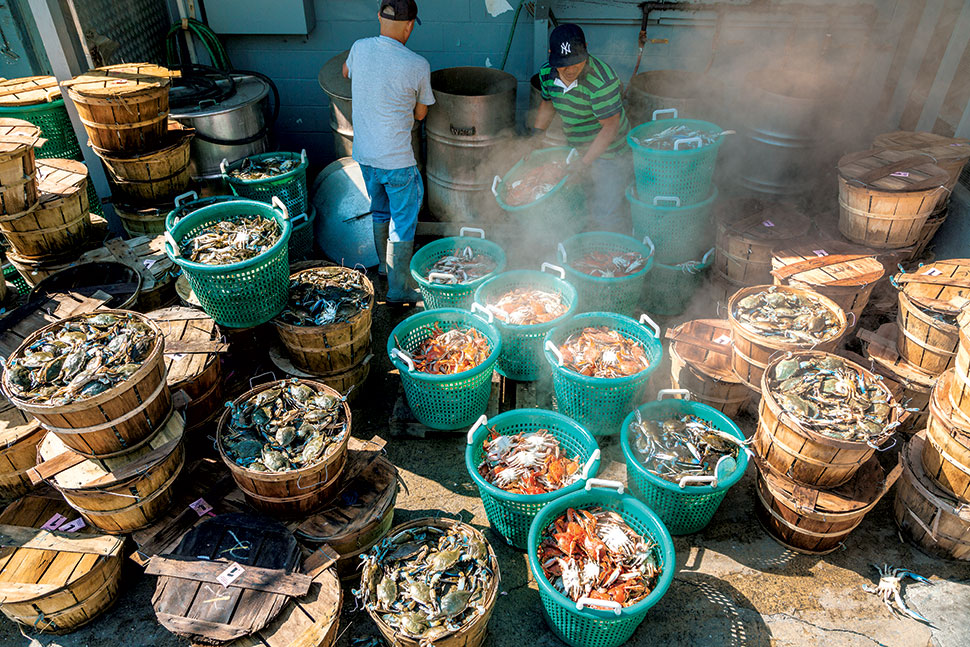
Last winter was harsh for all living things in the Mid-Atlantic, but the extreme cold hit the Chesapeake Bay’s blue crabs especially hard, reducing the harvest by estimates of more than 20 percent from the already low yields of the previous year. Prices are up, but not enough to bolster the industry. “The watermen are hurting,” says Jason Ruth, owner of Harris Seafood in Grasonville, Maryland, on the far side of the Bay Bridge. In recent seasons, oysters, not crabs, have kept the watermen afloat.
Still, on a typical Thursday before a summer weekend, Ruth processes 400 bushels of blue crabs, shipping them out steamed (the pink crustaceans shown here) or live to restaurants as far away as New York and Bristol, Tennessee, as well as to Acme, Whole Foods, and Wegmans.
September is peak season for blue crabs, when they stop shedding their shells, becoming fatter and sweeter, and move from creeks and rivers into the bay and south toward Virginia for the winter.
Why do Chesapeake Bay crabs taste better than crabs from anywhere else? The water, naturally. “The bay and its rivers have the perfect balance of saltwater and freshwater,” Ruth says. “There’s nothing else like it.”
This article appears in the September 2014 issue of Washingtonian.





